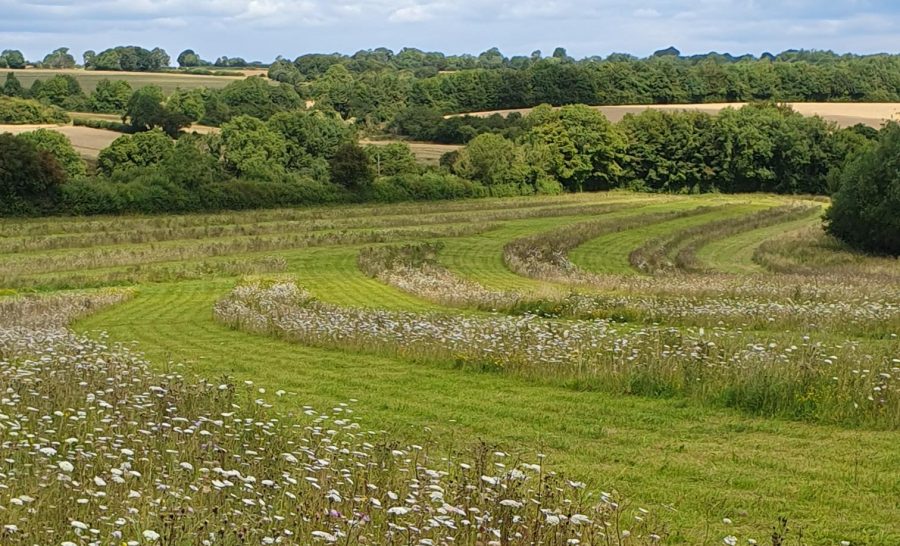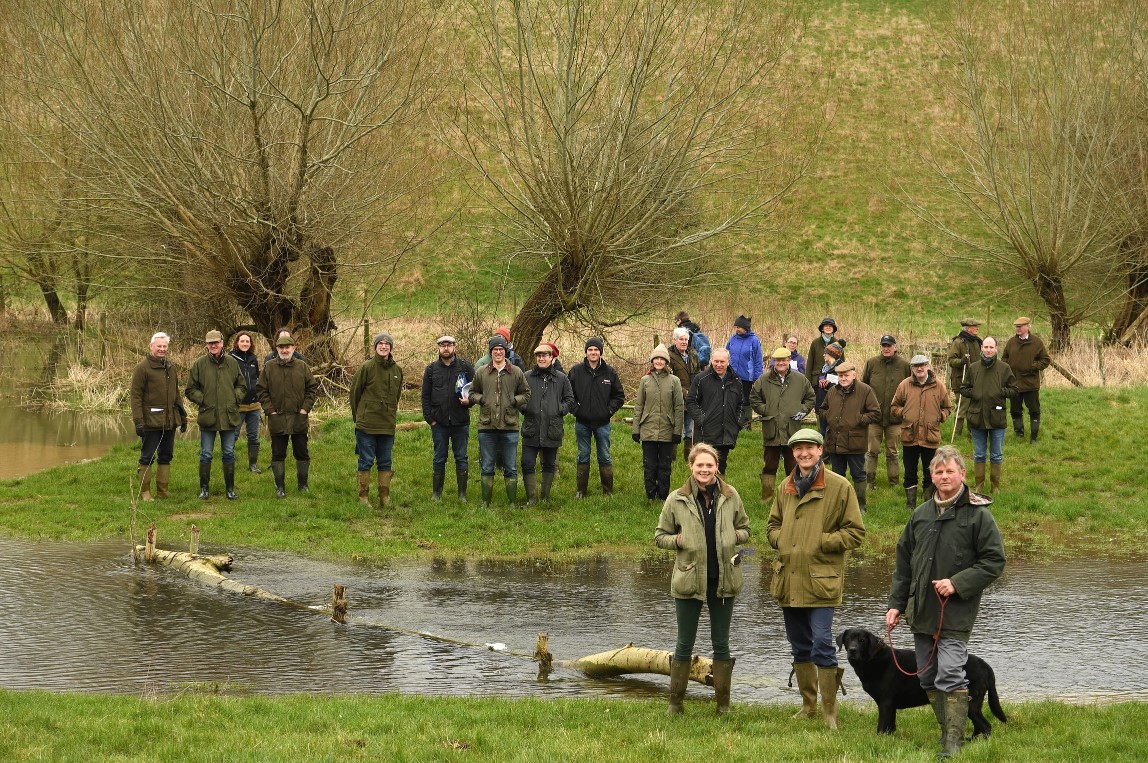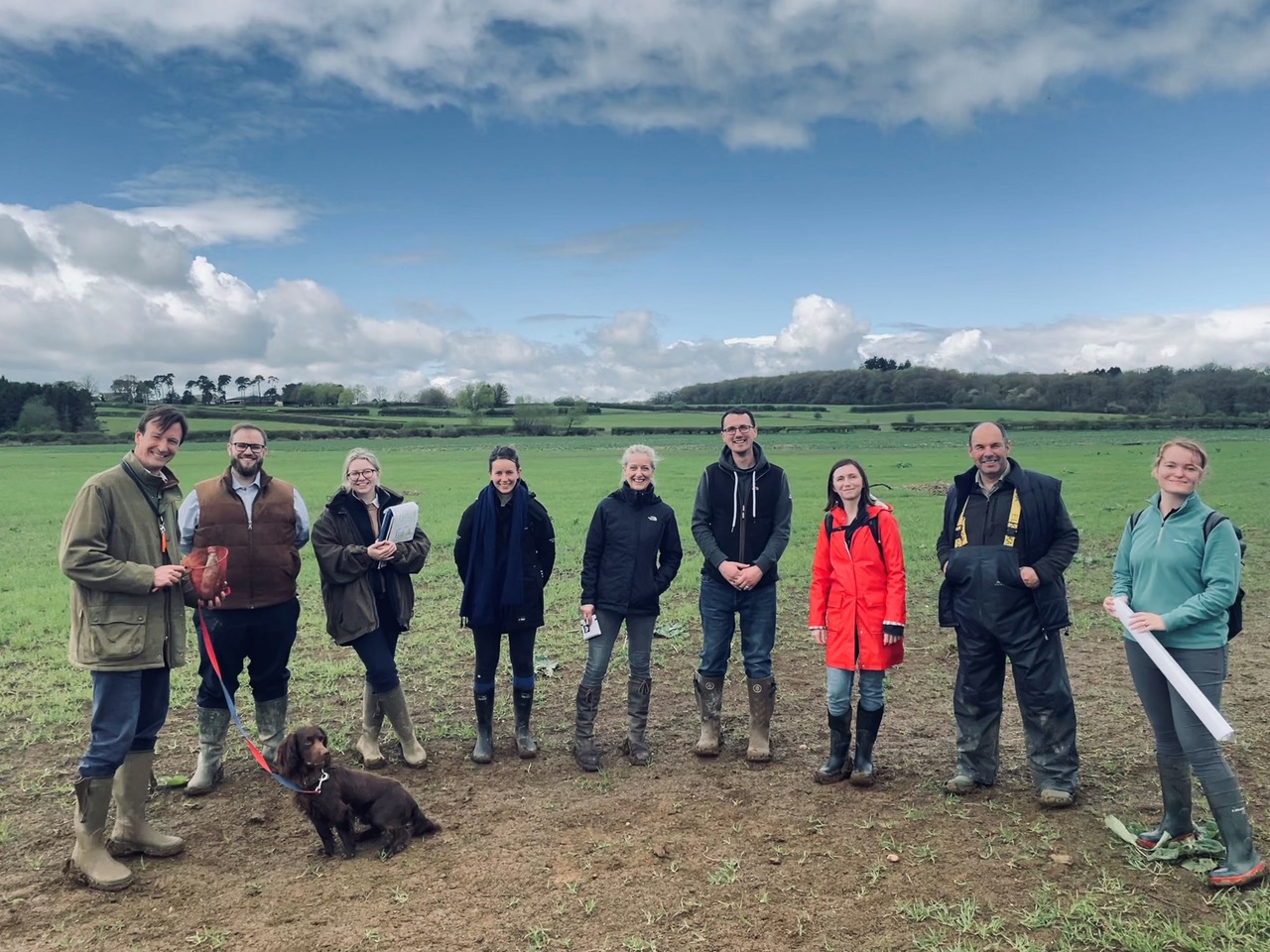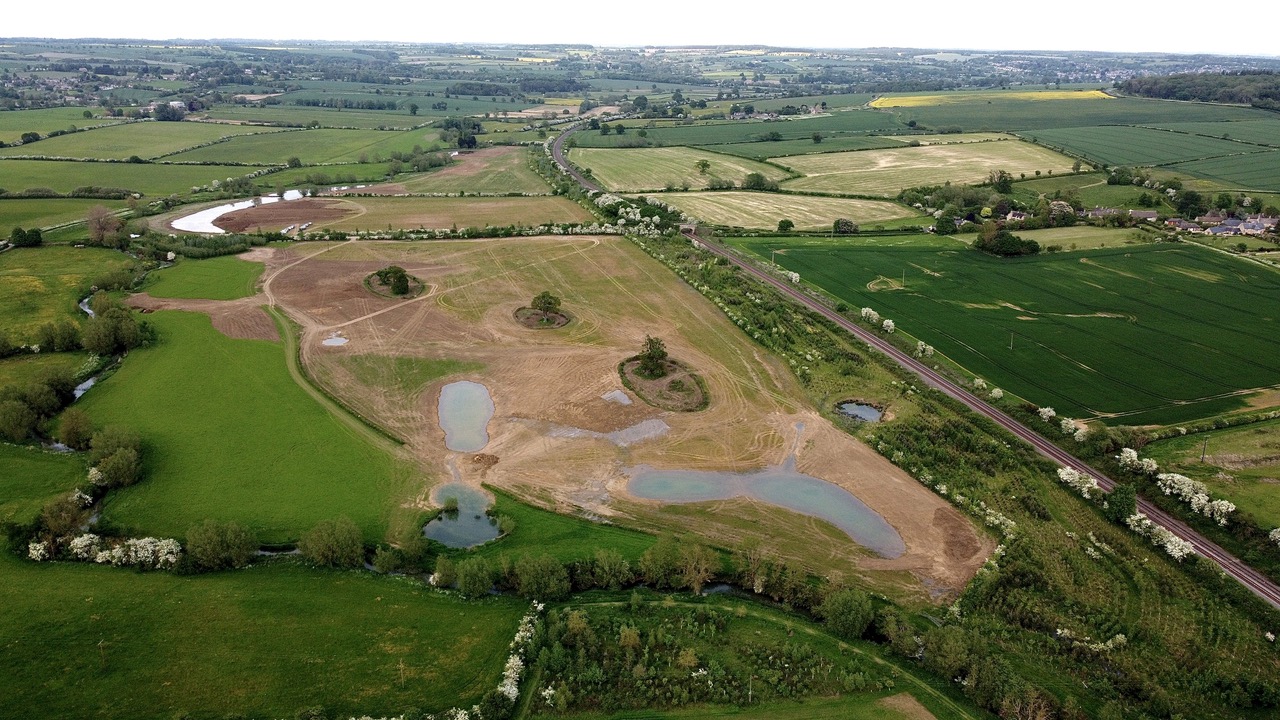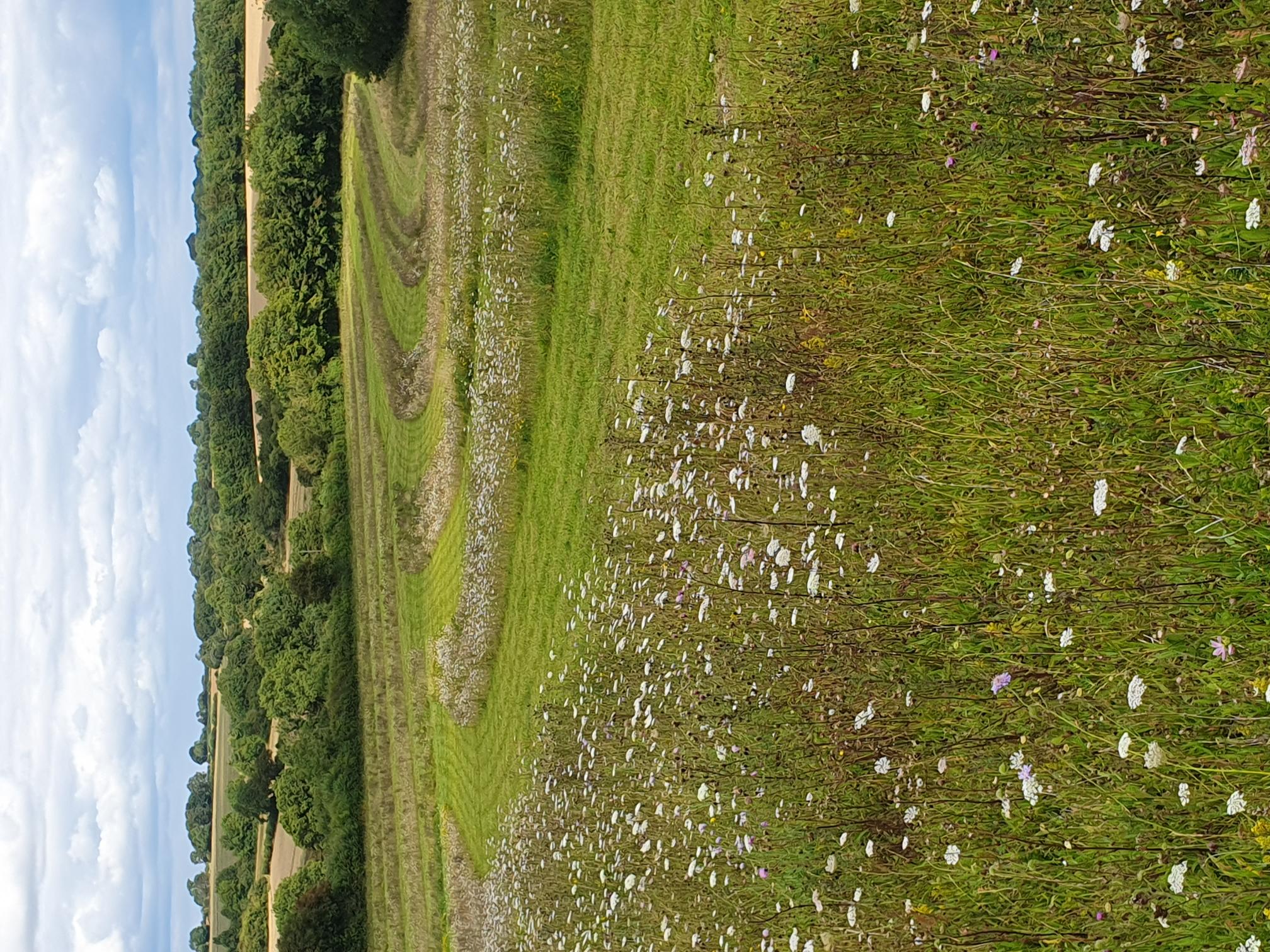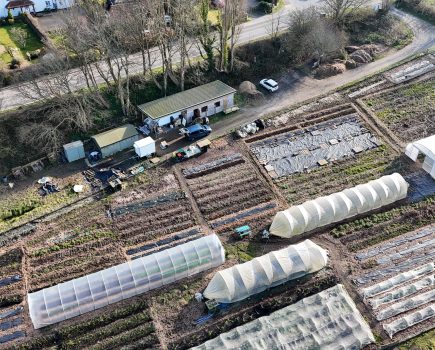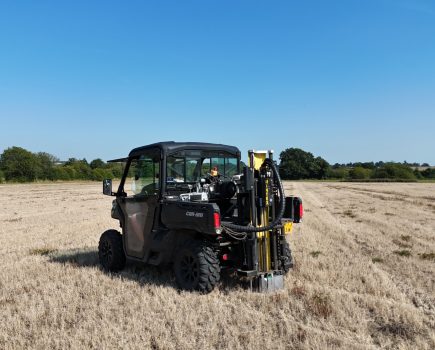Mike Kettlewell explains the workings of the North East Cotswolds Farm Cluster.
A favourite farmer hobby is peering over the hedge to compare crops or stock, and when a cocky neighbour has his speculative winter sowing drowned or a crass planning application turned down, there is that inescapable whiff of schadenfreude.
Competition gets even keener in the summer show rings, yet this competitive effort and spirit gets us nowhere in the market place, where we are dwarfed by business giants.
The ugly reality is that the open market ruthlessly exploits relative weakness and size matters. We are generally price takers and not price makers.
One solution would be for large venture capitalist companies to acquire vast portfolios of land so that their market power equals that of the supermarkets. This, in my opinion, would be socially corrosive and a disaster for our environment.
An alternative that is gaining popularity is the farm cluster, where farmers formally cooperate on common goals while retaining individuality. Environmental health and restoration is a common theme in nearly all cases and 100 such clusters have already been registered, with more forming almost daily.
The Game and Wildlife Conservation Trust (GWCT) has successfully fostered a number of such clusters. Other NGOs have done similarly and there is also keen interest from DEFRA. The movement has considerable merit and momentum, with much to offer nature, society and farmers.
Clusters are locally based ‘cooperatives’ in contrast to the Nature Friendly Farming Network, which is a countrywide network of like-minded farmers. The two approaches are, however, complementary.
The cluster that includes our farm was formed three short years ago from the efforts of three visionary enthusiasts, Matt Izod, Samantha Sandberg and Henry Astor. There are now 150 farms, of all sorts, shapes and sizes, participating in a loose confederation that covers more than 45,000 hectares of the NE Cotswolds (NECFC).
This cluster, possibly the largest in the country, is a Community Interest Company; its structure is three directors, two salaried facilitators and a six strong advisory group, with the unifying theme of riparian health, ecological restoration and successful farming in the upper Thames catchment. Such is the local enthusiasm that it has already spawned a sister cluster based on the River Cherwell catchment.
The project is unquestionably ambitious and should deliver real improvement to the Thames area, particularly if Thames Water Company really improves its record of sewage discharges. The aim is to slow winter river flows and hold more winter water, carbon and nutrients on flood meadows.
The river’s improving health and biodiversity follows major reductions in nutrient and silt run-off. Recreating many of the botanically rich Thames valley water meadows is absolutely key.
The most immediate benefit to us farmers has been knowledge exchange, collaboration and social intercourse which has provided a sense of cohesion. This stems from a series of farm visits on subjects such as hedge restoration, herbal leys, carbon capture, biodiversity net gain, green hay and managing wild deer, all fueled by coffee and cake.
The cluster is lucky to have at its geographic centre Ian Wilkinson’s FarmED, with tremendous facilities for workshops, demonstrations and to hold strategy meetings. Costs to farmers are kept low at £1/ha annually, with running costs built into grant applications.
This cluster has already gathered support from DEFRA, Wild Oxfordshire, the Cotswold National Landscape board, the Environment Agency, Natural England and Thames Water, amongst others.
The cluster’s most ambitious project is a large, long term, landscape recovery scheme that covers 14% of the cluster area. Tim Field, a science and agriculture alumnus of St Andrews and Reading Universities, directs this project. The goal is nothing less than restoring the pristine health of the Evenlode river, followed later by the Windrush, mitigating flooding, improving biodiversity and enhancing climate resilience. It is a complex project that involves contributions from numerous agencies, with ecologists, hydrologists, interested bodies and economists adding their expertise.
A very important step on this journey has been the development of the One Field Project based on one field, belonging to the Izods, that floods regularly. This exercise models the consequences of changing from conventional arable cereal cropping through no till, grass ley and herbal ley to diverse flood plain meadow and ending with a mosaic field of several habitats.
The effects of each change upon soil loss, carbon capture, nutrient retention, water retention, knowledge transfer and diversity are being calculated and tabulated. The most dramatic finding from this exercise is how much is gained progressively with each step down the path to a mosaic.
Monetising these gains from all sources gives a financial yield eight times greater than commodity sales, all for a trivial loss in food production. Matt and Nathan Izod’s field is starting down this path and the changes will be measured and rolled out to others. Some farms have already taken major steps, bypassing the intermediaries, so persuasive are the models.
Farming in Protected Landscapes (FiPL) has provided several three-year grants for smaller scale exercises. The first was for feeding farmland birds over winter. It delivered quick results, and now 42 farms are taking part in this, our third year.
This winter’s 65 tons of feed, made from seed sourced from within the cluster, was crushed and mixed by the Izods at Priory farm, for collection by participating members. The home mix comes with very useful cost savings and we anticipate supplementary feeding (AB12) will now be added to participating farms’ stewardship agreements.
It is wonderful to see how much relaxation and enjoyment so many hard-nosed farmers have had from this simple exercise that delivers so well. Other grants followed for baseline measuring soil carbon on 17,000ha to enable reliable assessment for future carbon capture; another was to predict the rise in soil carbon from increasing soil health.
The botanical state of 900ha of Windrush river floodplain meadows has also been recorded on 42 farms and is now on the Open University QRCode project; this is all playing a crucial role in building ecological resilience in this area of the Cotswolds.
Modern food chains are long and tortuous and have a high carbon footprint. Although the UK carbon dioxide emissions are declining steadily, this is largely from the loss of our heavy industries. We don’t make heavy kit any more. But, as the Oxford economist, Professor Sir Dieter Helm, points out, if we measure our per capita carbon cost, it is still rising from imports and its transport.
Localising food production and consumption is therefore clearly important but becomes difficult with the loss of local abattoirs. Finding a solution to this issue is important because so many cluster farms are small to medium-sized stock keepers whose livestock are vital engines of regeneration.
A common thread is maximising the uptake of stewardship options on all farms to deliver financial security and maximise ecological gains. Tim and the steering group are also developing tools to take part in the emerging markets of biodiversity net gain and carbon sequestration, teamed with Rothamsted. They anticipate that commercial buyers will be attracted by the potential of such a large acreage.
Members are also seeking to market more farm produce locally, fostering local cohesion. One member, Tim Coates, a co-founder of Oxbury Bank, brings financial expertise to natural capital and other projects undertaken by cluster members.
The cooperative climate has certainly given everyone a sense of optimism, facilitated the exchange of ideas and created a buzz of enthusiasm to counter the enveloping political chaos and gloom.
To make all this work we have been very lucky to have had the enthusiasm and skill of Tim Field and Caroline Greenwood, our facilitators, who have been key midwives of the cluster and the welcome face of an efficient, light touch management structure, keeping us together while moving forward.
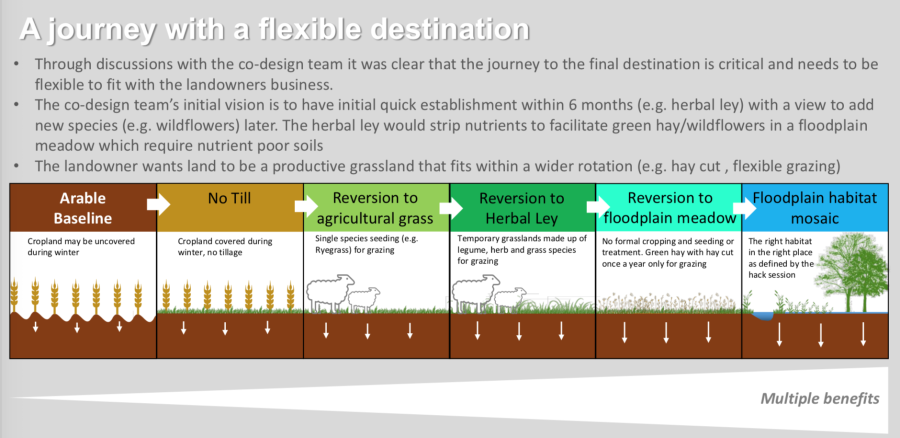
- Visiting a meander created in a tributary of the Evenlode, summer 2023
- The One Field team on the field in question; Matt Izod is fourth from the right and Caroline Greenwood is centre
- Pudlicote Farm, Ascot-under-Wychwood, showing 2023 habitat/flood works
- Green hay donor site cut to leave variable habitat for animals living and breeding in the field

